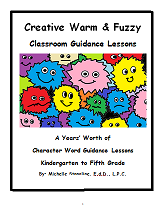Sandtray Therapy Class Final Exam -- Sandtray Theory: Expanding The Self
by Sherrie Bridges-Sinclair #9
(Sand Tray Therapy Class Student)

Symbols of Japan: Sandtray Therapy Class Final Exam -- Sandtray Therapy Theory: Expanding The Self
Sandtray Therapy Theory: Expanding Self in the Sand
According to Alfred Adler, we begin to form an approach to life during our first 6 years of life (Corey, 2009). While Adler believed that human behavior is not solely determined by our heredity and environment, his assertion was that we are defined primarily by what we choose to do with our abilities and limitations. Therefore, understanding our own perceptions, thoughts, feelings, values, beliefs, and convictions provide insight into our awareness of self and how we measure ourselves against others.
In contrast to Adler, the Existential approach asserts that because we have the capacity for self awareness, we are free to make choices, thus we are responsible for our actions (Corey, 2009). The basic premise of this approach is that we are not the victims of circumstance but rather we are what we choose to be. In this context, our existence is not fixed, but rather we have the ability to re-create ourselves through our actions.
It is my belief that as a baby we are born naked and innocent, devoid of any preconceived knowledge or expectations of what our future world will entail. It is only through our experiences with other people that we learn to define who we are and what we will become. It is these experiences that help to shape our basic wiring into something that becomes intricately developed into a person.
These experiences help to define our confidence and self-worth. Self-esteem is the concept that reflects a person’s overall evaluation or appraisal of one’s worth. Self-esteem encompasses our beliefs and emotions about ourselves. Our self-concept can be either positive or negative. Negative self-esteem is a perception that affects children, youth, adolescents, and adults alike. It crosses all gender, cultural, and socioeconomic lines. We cannot understand ourselves in the context of our parts but must take a holistic approach,
The rationale of The Theory of Expanding the Self in the Sand is based on this holistic approach. This theory is used to help individuals see and re-define their self-concept. It is the hope that individuals will use the sand to explore their positive and negative characteristics and work towards unifying these parts into a capable, competent, and self-assured individual. In the sand, the individual is both the author and the artist of this picture. If the individual is able to change his or her concept of self, he is able to change the picture being painted in the sand.
The following lesson plans can be used to work with the client on expanding the self. This theory makes use of the folding fan, the kimono, and the Japanese cherry blossom, three well-known symbols of the Japanese culture.
Lesson One: The Fabric of My Being
Theme: Building Self-Esteem
Recommended Age Range: 6 and up
Targeted Population: Individual, Group, or Family
Goals:
1. Improve self-esteem by identifying, expressing, and embracing the positive and negative characteristics that are interwoven in our being like the colorful designs on a Kimono.
2. Promote positive social interactions with others by appreciating everyone’s unique personality.
Materials:
1. Miniatures
2. Kimono dress (baby doll clothing, or baby clothes)
3. Alternatively, can use paper cut out of Kimono dresses
4. Crayons or markers to decorate Kimono if using paper cut out
Instructions:
Allow client to decorate Kimono or choose Kimono dress (if available). Place Kimono in the sand. Allow client to personalize Kimono with miniatures that represent aspects of their personality. When the client is done, have the client point out each miniature and how it contributes the fabric of his or her being. Help the client process whether or not he or she has embraced the parts identified, and if not, what would be changed and why.
Lesson Two: New Beginnings – A Time of Change
Theme: Building Self-Esteem through identifying and accepting mistakes
Recommended Age Range: 10 and up
Targeted Populations: Individuals, Family, Couples
Goals:
1. Improve self-esteem by helping the individual to look back at past mistakes and understand that these mistakes do not define who you are as a person. It is within our power to re-write our life as we look forward, repaint the picture in the sand.
2. Improves self-esteem by helping the person to understand and acknowledge that we all make mistakes and this does not make us inferior to others.
Materials:
1. Miniatures
2. Plastic cherry blossom branches (alternatively, download picture of cherry blossom branches and paste on cardboard).
Instructions:
In the Japanese culture, the cherry blossom represents a new beginning. Have client place cherry blossom branches in sandtray. Client is to choose a miniature that is representative of him/her. Miniatures are then chosen to represent past mistakes, conflicts, or problems; these miniatures are then placed behind the client in the sandtray. The client next chooses miniatures that represent lessons learned from the mistakes, alternative choices that could have been made, or how he/she pictures life as they move forward.
(Alternative activity: Follow instructions as above except instead of looking at mistakes, the client is instructed to choose miniatures that represent support systems or resources. These are then placed around the client in a circular or radial fashion).
Lesson Three: Unfolding My Potential
Theme: Building Self-Esteem
Recommended Age Range: 13 and up
Target Population: Individual, Couple
Goals:
1. Improve self-esteem by helping client gain insight into their inner strengths and examine the various paths that they are capable of taking.
2. Empowers client to thick positively about his/her abilities.
Materials:
1. Miniatures
2. Pipe cleaners, straws, bamboo sticks, or popsicle sticks (serve as the wooden slats in the folding fan).
Instructions:
Allow client to choose what will be used to make the folding fan. Client is to place chosen objects in a fan fashion. Client will choose a miniature that represents him/her and place it in the sandtray at the gathered end of the fan. The client will choose miniatures that represent potential paths that are available to the client or that the client wants to achieve. When the client has completed unfolding his/her potential, have the client discuss what the miniatures represent and how they impact the concept of self.
References
Corey, Gerald. (2009). Theory and practice of counseling and psychotherapy. Brooks/Cole Cengage Learning: Belmont, CA.
Homeyer, L.E., and Sweeney, D.S. (2011). Sandtray therapy: A practical manual (2nd ed.). Routledge Taylor & Francis Group: New York, NY.
Disclaimer: This website and its content is intended for trained licensed mental health professionals and school certified mental health professionals to use for their clients / students at their own discretion.
*If you ignore the disclaimer above are using these techniques on yourself and you feel any discomfort or upset it is highly suggested that you seek out a licensed mental health professional immediately.
"Beyond Art Therapy" is the concept from Dr. Stangline that combines all creative fields in therapy. It is not the traditional "art therapy" but goes beyond to include sand tray therapy, play therapy, mindfulness, meditation, color therapy, cognitive behavioral therapy, and a vast majority of other therapies.
For any other type of mental health emergency call your local 911 / Police Number immediately.
Dr. Stangline does not offer advice / suggestions to anyone who is not a professional mental health provider, or a student who is studying this field and has questions about mental health programs of study.
See our Exciting Selection of eBooks:
Award Winning:
Creative Counseling 101 eBook
Our Best Seller!
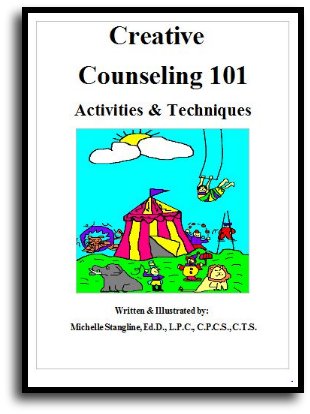
Step By Step Therapy:
Learn how to be a more Creative Therapist with the Book that started it all!
- Graduate School Counseling book used by hundreds of graduate counseling students!
- Includes full color reproducible worksheets with most activities.
- Winner of the Counselor Writer of the Year Award, 2011, Georgia Regional Award
Download Your Copy Today Only $39.95:
See Creative Counseling 101 eBook Information Here:
Get the Set
of all four
eBooks for only $98.95:
An incredible collection of how to do therapy eBooks!
A $159.80 Value,
You Save Over $60!
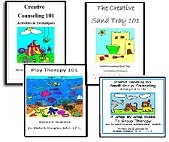
Get your complete set of the Creative Counseling 101.com eBooks by Dr. Michelle Stangline for only $98.95, that's less than $25.00 per eBook (Regular Price is $39.95 for each eBook.).
Your complete set includes:
- Creative Counseling 101
- Creative Group Counseling 101
- Creative Play Therapy 101
- Creative Sand Tray 101
For more information click the link below:
See Complete Set of eBooks For Sale Here:
New!!! "Beyond Art Therapy" 101 eBook
Over 300 pages of Beyond Art Therapy activities and techniques. Learn what I teach graduate counseling students!
See the link below for more information.
Only $39.95
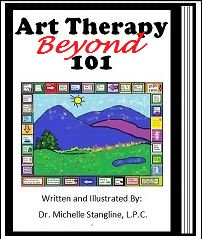
See More Invividual eBooks For Sale:
Sand Tray Therapy 101 eBook:
Learn how to do Sand Tray Therapy or enhance your skills.
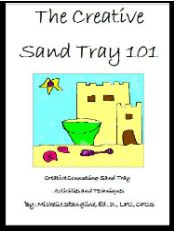
Play Therapy 101 eBook
Learn how to do play therapy or enhance your skills.
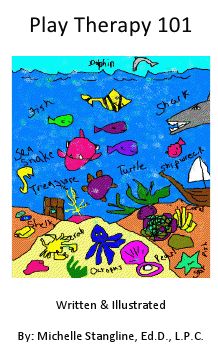
Small Group Counseling eBook For Sale:
Learn how to do creative group therapy and enhance your skills.
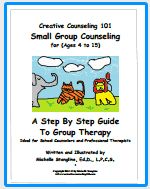
School Counselor Guidance Lesson & Social Stories eBook for sale:
Get a year's worth of school counselor guidance lessons with "Creative Warm & Fuzzy Classroom Guidance Lessons eBook". Introduce your students to the "Warm & Fuzzy Way". Click the link below for more information:
Warm & Fuzzy School Counselor Guidance Lessons eBook
